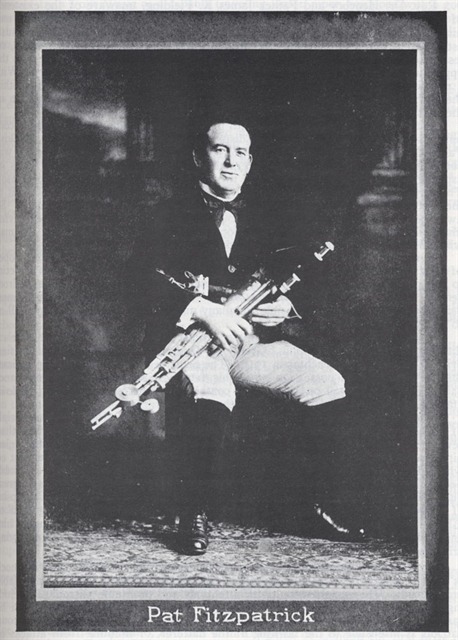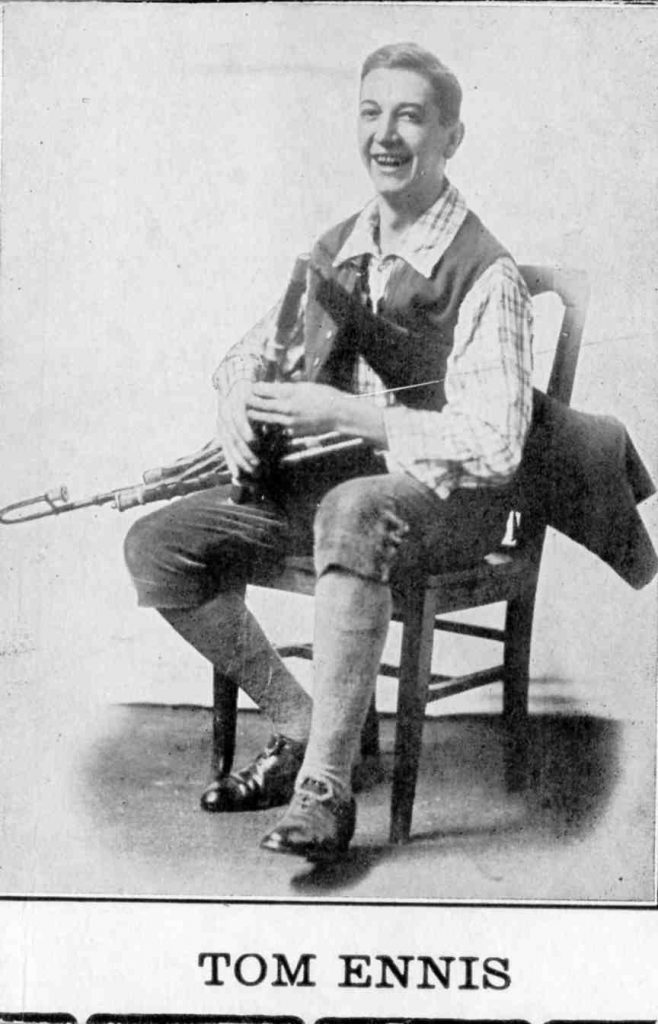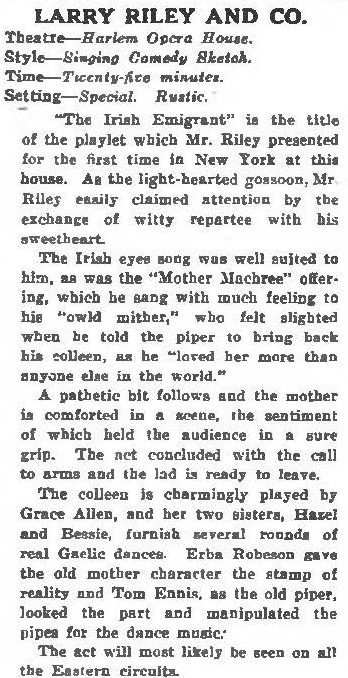Archive Blog
April 2021
Early Commercial Piping Recordings – 1917
This article will take a look at the burst of commercial recording activity that took place in the US in early 1917. Over a couple of months two Irish pipers made a number of visits to recording studios in the New York area, resulting in the release of piping recordings on a number of major US record labels.
The earliest known commercial recordings of piping were made in the UK by Berliner around 1899 (by an un-named piper) and in the US by James C. McAuliffe for Edison between 1899 and 1903. Information on McAuliffe can be found in An Píobaire Vol.4 No.11 and further information in an article by Nicholas Carolan in An Píobaire Vol.4 No. 13.
In 1902 Patsy Touhey had been offering a service where you could order custom cylinder recordings of his piping. You can see the ads on Nick Whitmer’s site, Lives of the Pipers.
William Andrews became the first Irish-based piper to record, for the Beka, Bell and Edison labels during the teens but piping in the gramophone era really kicked off in 1917.
Recording companies in the US began to show interest in issuing records by Irish musicians in late 1916 when Eddie Herborn and James Wheeler visited the studio to record six sides on accordion and banjo for the Columbia label. Their recording of The Stack of Barley can be heard here on the ITMA website.
Image of Patrick Fitzpatrick from Francis O’Neill’s Irish Minstrels and Musicians (1913)
On 8th January 1917 Leitrim-born piper, Patrick Fitzpatrick recorded a set of reels for the Edison label:
Patrick Fitzpatrick – The Kilfenora, The Flower of The Flock, The Floggan Reel (Ed 51692)
The reels were issued as one side of Edison 51692. Accordion-player Patrick J Scanlon appeared on the other side of the record with a set of jigs.
Fitzpatrick returned to the studio just a couple of days later on 13th January and recorded a second side, this time a set of jigs:
Patrick Fitzpatrick – Comedy Maid, Rakes of Kildare, Miss Daly’s Jig (Ed 50615)
The other side of the issued record featured Reilly’s Reel (Medley of Reels) by violinist Harold Veo. The record numbers for the two Edison releases (51692 and 50615) would indicate that although the jigs were recorded later, they were issued before the reels recorded on 8th January.
O’Neill describes Fitzpatrick as ” A rarity among pipers, Mr. Fitzpatrick is not only abstemious, and economical in his habits, but a thrifty business man as well.” Fitzpatrick has an unusual piping style, with a very sparse but distinctive style of regulator playing.
A full biographical sketch of Fitzpatrick can be found on Lives of the Pipers website:
The Victor company must also have been keen to record an Irish piper as Fitzpatrick made a trial recording for the Victor company on 26th February (Victor matrix [Trial 1917-02-26-12] Irish jigs). Although Fitzpatrick went on to make further recordings for other labels, Victor did not decide to go ahead with a full recording session. Two days later, on 28th February, Tom Ennis made his first known visit to the studio to make a trial recording for Victor.
Image of Tom Ennis from NPU Archive.
Ennis had been in New York in January 1917 appearing at the Harlem Opera House in “The Irish Emigrant” with Larry Riley’s Company, playing the part of an old piper. [New York Clipper, 24th January 1917 p.19]
Fitzpatrick made his third visit to the studio (this time for Columbia) on 9th March 1917. On this occasion he recorded a jig and reel and this became his most enduring recording, one that would be reissued on a number of labels over the coming years:
Patrick Fitzpatrick – Three Drops of Brandy (Co A2309)
Patrick Fitzpatrick – Donnybrook Fair (Co A2309)
Whether Ennis’s trial session was the more successful, or Victor wanted a previously unrecorded piper is uncertain, but it was Ennis was back in the studio for Victor on 17th April 1917 to record his first issued records. The four sides recorded included popular song airs, hornpipes, jigs and reels, the first two featuring piano accompaniment and the second two solo pipes:
Tom Ennis – Believe Me If All These Endearing Young Charms, Killarney, The Last Rose of Summer (Victor 18286)
Tom Ennis – The Three Little Drummers, The Connaughtman’s Rambles, The Joy of My Life (Victor 18286)
Tom Ennis – Murphy’s Hornpipe, Londonderry Clog, McNamara’s Hornpipe (Victor 18366)
Tom Ennis – The Maid That Left The County, Drowsy Maggie, Around The World For Sport (Victor 18366)
Fitzpatrick went on to make two further recordings for the Emerson company in 1917 and a final record around 1919 for Lyric.
Ennis would return to the studio on numerous further recordings, with his final session in late 1929. Ennis’s later recordings included further solo pieces, ensemble recordings with Redie Johnson on accordion and fiddle players John Gerrity and Tom Quigley and most famously, with Sligo fiddle player James Morrison.
Special thanks to Alan Morrisroe who supplied the transfers of the recordings and pitch checked all sound files.
For further information see Ethnic Music on Records: A Discography of Ethnic Recordings Produced in the United States, 1893-1942 by Richard Spottswood. This work contains comprehensive information on Irish records issued in the US.


